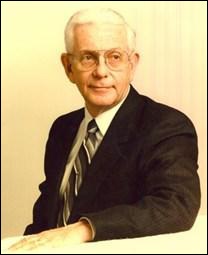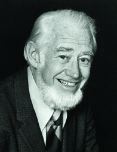The Story of Our First Graduates
In 1913, the Department of Chemistry celebrated its first three graduates: Charles Neil Cameron, Ashley Mackintosh Walker, and Osman James Walker.
 |
The oldest of these was Ashley Walker, who was born in Ancaster, Ontario. He was 25 when the establishment of the U of S provided him with his opportunity to pursue higher learning in 1909. While at the U of S, he was a scholarship winner and a rugby champion. Ashley graduated into a time of global upheaval, and like many young men of Saskatchewan, he enlisted in the war effort, and served in the 196th battalion and the Canadian Army Medical Corps; in fact, he served in the same battalion as John Diefenbaker. Ashley was wounded in the war, but survived and returned to take up a teaching position in Regina. His wife, Helena, was active in the Regina community, and in 1932 became the first woman to be elected to Regina City Council. |
 |
Charles Cameron was the youngest of the three, not yet 20 when he graduated. He had come to Canada from his native Scotland in 1903 to settle in Saskatoon. He too was a scholarship student, and like Ashley he enlisted in the army during World War I. He served in the Princess Patricia's Canadian Light Infantry, and was lucky enough to survive the trenches of France, though he too was wounded. When he returned, he pursued a Master's degree in Chemistry in this same department, before going on to a PhD at the University of Chicago with Professor John W. E. Glattefield, a pioneer in the reactions of sugars. Dr. Cameron returned to Saskatoon, where he became a professor in this department in 1923. At that time, he met Margaret Shiel, a recent Masters graduate of the department who had become an instructor. Charles and Margaret married, and had two daughters. Sadly, Professor Cameron's life was cut short by pneumonia in 1929. |
 |
Osman Walker was born in Portage La Prairie, and like Charles he was destined for a career in science. He worked as a chemist in Saskatoon after graduating, then pursued graduate degrees at Harvard and McGill University. While at Harvard, he worked with Professor Theodore W. Richards, who had served as mentor to Osman's professors at the U of S, Dr. R. D. McLauren and Dr. L.L. Burgess, as well as to a future faculty member named Thorbergur Thorvaldson. (Dr. Richards, who was awarded the 1914 Nobel Prize in Chemistry, served as an inadvertent father to this department!) Osman joined the faculty of the University of Alberta, where he was professor of chemistry, including 16 years as the head of that department. While at McGill, he had married Ella May Jacoby, and they raised two sons. Ella May Walker became a renowned Edmonton artist, musician, and author, as well as an advocate for the preservation and documenting of Edmonton's history. |
This photograph, taken in the original chemistry laboratory in the College building (now the Peter MacKinnon Building), is believed to be (from left to right) Charles Cameron, Osman Walker, and Ashley Walker.

Distinguished Alumni
 Dr. Weldon Brown
Dr. Weldon Brown
Weldon G. Brown was born in Saskatoon in 1908 and was precocious enough to complete his bachelor's degree in chemistry in 1927 and a master's degree 1928. He enjoyed a remarkable time here, editing The Sheaf, playing Huskies football for two years, and publishing several peer-reviewed articles with his mentor, Thorbergur Thorvaldson. Indeed it was Dr. Thorvaldson who wrote and delivered his recommendation for an honorary degree from this university at a special Golden Jubilee Convocation ceremony in 1959. Click here to read the complete address, which lists many of his scientific accomplishments.
After a PhD at the University of California and postdoctoral experience in Europe and America, Dr. Brown enjoyed a long career in the Department of Chemistry at the University of Chicago, where he became known for the invention of paper chromatography (Nature, 1939,143, 377-378) and pioneering work on lithium aluminum hydride reductions (Organic Reactions, volume 6, 1951). He also gained some notoriety in his department for climbing a ladder into the burning chemistry building after an explosion and rescuing two colleagues who were too badly burned to climb down themselves. In his later career he studied chemical reactions in the presence of radiation produced by Cobalt-60, an isotope that also has an important place in the history of the University of Saskatchewan.
Dr. Brown married Mildred Mackenzie, and they raised four children in Chicago. Although he was a Saskatchewan Husky football player, Professor Brown is not related, so far as we know, to the Weldon Brown who won a Grey Cup with the Saskatchewan Roughriders in 2013.
Dr. Brown thanked his home department by establishing the Samuel and Ethel Brown Memorial Fund in honour of his parents. The fund is used to support special projects in the Department of Chemistry.
 Dr. Wilma E. Elias
Dr. Wilma E. Elias
Dr. Wilma E. Elias was born in Calgary, Alberta in 1925. Her mother had been a school teacher, perhaps inspiring a love of learning. Dr. Elias came to the University of Saskatchewan and completed her Bachelor's degree in chemistry in 1947, in the same class as another of our distinguished alumni, Robert Fuller. She stayed on in the department to pursue a Master's degree concentrating in organic chemistry with the now-world-famous carbohydrate chemist Dr. Raymond U. Lemieux. During this time, Dr. Lemieux moved to the Prairie Regional Laboratory of the National Research Council on the U of S campus. Wilma completed her thesis on disubstituted glycolic aldehydes in 1950.
She moved from Saskatoon to the University of British Columbia in Vancouver. There she continued studying carbohydrates and natural products in the laboratory of Dr. L. D Hayward. In October 1956 she became the first woman ever to earn a PhD (in any subject) from UBC!
Dr. Elias joined the faculty of Victoria College in 1958. In 1963, Victoria College merged with the Provincial Normal School to form the University of Victoria. Dr. Elias was a Professor of Chemistry at UVic until her retirement in 1985. She remained active in the community in Victoria, with a love of the arts and travel, until her passing in May 2018 at the age of 93.
Dr. Elias created a scholarship to provide funds for women to study chemistry. Information on the Wilma E. Elias Scholarship is available from the Department. (Photo provided by Dr. Elias' family)
 Dr. Robert A. Fuller
Dr. Robert A. Fuller
Bob Fuller was born in Moosomin, SK in 1926 and grew up in Regina. He came to the University of Saskatchewan in 1943 and completed his bachelor's degree in Chemistry in 1947. He continued on to complete his Master's degree in 1950 under the supervision of Dr. John W.T. Spinks in radiation chemistry, and worked at the Agricultural Research Centre in Saskatoon. He then completed a PhD in Agricultural Biochemistry at the University of Minnesota in 1955. He returned to Canada and began a career as a research chemist in Montreal at Johnson and Johnson Canada, where he became Director of Pharmaceutical Research in 1958 and Director of Research and Development in 1962. He moved to New Jersey in 1966 when he was promoted to Vice-President of Research and Development for the company's worldwide operations. He remained with Johnson and Johnson for the rest of his career, retiring as Corporate Vice-President of Science and Technology in 1986. Among many contributions to the science community, he was theFounding Chairman of the New Jersey Liberty Science Center.
Bob met and married Maureen Colbeck of Yorkton while they attended the U of S, and they raised three children. They were a like pair: she also held a science degree (in Medical Technology) from the U of S, and worked in research here in the College of Medicine. They were both active in sports, particularly curling. Bob finished 3rd in the United States men's national championship in 1970. Maureen passed away in 1993, and Bob in 2012.
Dr. Fuller asked that a scholarship be created for Saskatchewan students in the Bachelor of Science chemistry program, to be awarded based on academic excellence and financial need. Information on the Dr. Robert A. Fuller Memorial Scholarship is available from the Department.
 Dr. Alan C. Nixon
Dr. Alan C. Nixon
Alan C. Nixon was born in the Lake District of England in 1908, and graduated from the U of S with a B.Sc. in Chemistry in 1929, and an M.Sc. in Chemistry in 1931. He was a protégé of one of our first graduates, Professor Charles Cameron, before Dr. Cameron's untimely death from pneumonia. He went on to complete a Ph.D. at the University of California (Berkeley) in 1934 in physical organic chemistry, then taught chemistry at Berkeley for two years before becoming a research scientist at Shell Development for 33 years. He was an expert on plastics, paper chemicals and jet airplane fuels. Dr. Nixon became President of the American Chemical Society in 1972, and was awarded the Henry A. Hill Award recognizing service to professionalism in the ACS. He was an outdoorsman and in his youth a standout hockey goalie. He and his wife Gwendolyn had one daughter, Sandra. After Gwendolyn passed away, Dr. Nixon remarried in 1967, and he and Dr. Louise Hewlett remained together until his death in 2002. He was a controversial figure later in life for his skeptical view of the benefits of chemotherapy. Perhaps his most important professional achievement is the creation of the ACS Summer Education for the Economically Disadvantaged (SEED) program, which gives high school students the opportunity to work alongside professional scientists.
Dr. Nixon's interest in promoting young scientists lives on here in the Alan C. Nixon Summer Research Awards, created by Dr. Nixon through a donation to the Department of Chemistry.

Dr. Henry Taube
Dr. Henry Taube received the Nobel Prize in Chemistry in 1983. His Nobel citation reads "for his studies of the mechanisms of electron transfer reactions particularly of metal complexes." It was said that his work "dominated the development of his subject both theoretically and experimentally, making 18 major discoveries."
Dr. Taube was born in Neudorf, Saskatchewan and received his B.Sc. (1935) and his M.Sc. (1937) from the University of Saskatchewan. In 1940 he completed his Ph.D. at the University of California (Berkeley).
In his acceptance speech, Dr. Taube said, "But the benefits of science are not to be reckoned only in terms of the physical. Science as an intellectual exercise enriches our culture and is in itself ennobling. Each new insight into how the atoms in their interactions express themselves in structure and transformations, not only of inanimate matter, but particularly also of living matter, provides a thrill."

